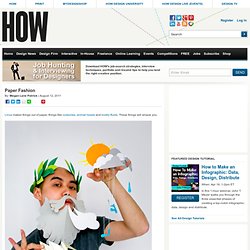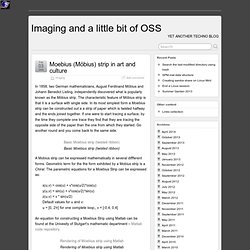

Origami. The quick little bunny tutorial. I really wanted to make the sock bunny that Heidi (from My Paper Crane) created, but I didn’t have any of those fantastic red and brown monkey socks.

What I do have is baby socks: tons of cute, mismatched, totally useless, never stay on baby socks. Now that my littlest is very much not an infant and too soon will be a toddler it seems kind of silly to keep all those teeny tiny socks. So I made a bunny out of them. And a tutorial too. This is indeed a quick little bunny. Materials: baby socka handful of stuffingheavy duty threadscissors Make that bunny: Before you start sewing take second to look at the sock you have. The body: Take some stuffing and stuff the foot part of the sock–not too tight! The tail: On the top of the bunny’s back, sew a circle about an inch in diameter with a simple running stitch. The head: To make the head, put a little stuffing inside the sock and sew a running stitch around the top of the heel.
The ears: Holiday 11. LEGO Build Together : LEGO® Star Wars™ ROAD TRIP TV Commercial. Paper Fashion. Linus makes things out of paper, things like costumes, animal heads and bodily fluids.

These things will amaze you. 7 Artists Who Create Magical, Miniature Worlds. For as long as there’s been art, there’s also been really, really tiny art.

Yet miniatures are usually relegated to a tiny corner in a museum (pun intended). Which is exactly what makes Otherworldly, a current exhibition at New York’s Museum of Arts and Design, so wondrous: This just might be the largest exhibition of miniature contemporary art ever assembled, featuring 37 artists. In every corner, another tiny world. One of the strangest facets of seeing the show is how durable the appeal of miniatures really is. You might think that they’d be passe in an age where digital worlds can be so infinitely complex. And you have to see these in person, because a weird thing happens when you look at something familiar that’s also really, really small.
Maybe you’ll feel the same? Moebius (Möbius) strip in art and culture. In 1858, two German mathematicians, August Ferdinand Möbius and Johann Benedict Listing, independently discovered what is popularly known as the Möbius strip.

The characteristic feature of Möbius strip is that it is a surface with single side. In its most simplest form a Moebius strip can be constructed out a a strip of paper which is twisted halfway and the ends joined together. If one were to start tracing a surface, by the time they complete one trace they find that they are tracing the opposite side of the paper than the one from which they started.
Go another round and you come back to the same side. Basic Moebius strip (twisted ribbon) A Mobius strip can be expressed mathematically in several diffferent forms. X(u,v) = cos(u) + v*cos(u/2)*cos(u) y(u,v) = sin(u) + v*cos(u/2)*sin(u) z(u,v) = v * sin(u/2) Default values for u and v: u = [0, 2π] for one complete loop;, v = [-0.4, 0.4] WeavingDyeing. That artist woman.
Woven Tree Wall Hanging. As part of Grade 1's weaving unit we will be making this Spring Tree wall hanging.

This is also a good project in the Fall using autumn colors. As a child I remember a macrame version of these trees on a metal hoop but I could not find the instructions anywhere for the life of me so I came up with this version for the students. Another reason why this project works well during the Spring and Fall seasons is that this is when you are pruning your trees and bushes. You need a willow type branch, one that is flexible and will not break while "green". Form a circular loop and tuck the ends in to hold the shape.
Now you could also do a nice weaving on the willow hoop like this. For the tree I used wool roving...it works especially well at the top of the weaving where it is rounded...you then could add other materials in like bulky yarn or other natural fibers. Now I dye my wool using kool aid or at this time of the year you can use easter egg dye. Tie a knot. Take care and I'll see you soon. Nature Crafts for Kids Weaving, Free Nature Crafts from found objects. Inspired but nature. All you do now is look for interesting things to weave in-between the twine, try anything; twigs, leaves, feathers whatever you find. We live close to the beach so when I do this activity with Ben, Dan and their friends we use anything we find on the shore; seaweed, bits of old string, sometimes a bit of manmade stuff, it's all part of the fun of using whatever's around you.
Thread whatever you find through the warp threads. Of course you can experiment with different sized weaving boards as well. Or as an alternative to twine make your own cordage from nettles and weave using coloured paper.